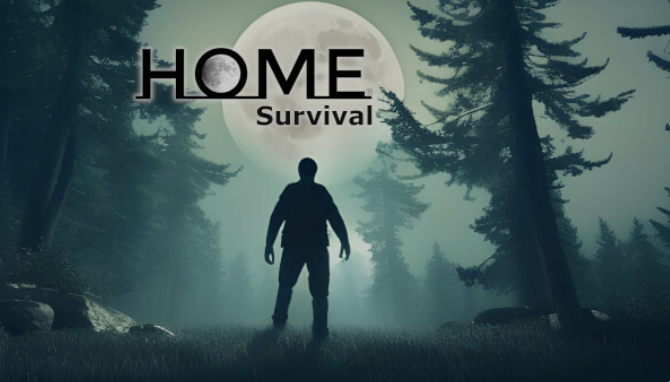The Full Home Survival Kit Checklist
A perfect survival kit doesn’t exist- what is right for you depends on your situation and risk tolerance. That said, we have as close to perfect of a starting point for you: our comprehensive checklist.
Suggested Additions for Your Survival Kit
We’ve covered the survival kit essentials, but as we said earlier: there isn’t a perfect survival kit. Your situation, specific resources, and possible threats vary from the next person’s. In this section, we list additions that are not essential but could be extremely helpful during a specific emergency.
- Generator: Generators are great for when the power goes out. 3000 running watts is a good amount to keep the essentials powered up.
- Generator Fuel: Depending on your generator choice, you’ll need plenty of fuel to keep it running (shoot for 3 days and grow your storage from there).
- Rain Collection Barrels:Collected rain, though not immediately potable, is a versatile water supply in an emergency.
- Canning Kit: It’s not for everyone, but if you’ve been thinking of expanding your food storage or taking up a new hobby, a canning kit is your first step.
- Camp Stove: A trusty camp stove will give you yet another option to quickly prepare meals. Grill and Stove Fuel: If you have a propane grill, get some spare propane. Camp stove? Get extra camp stove fuel.
- Handgun: The preferred handgun that you are trained on. This can complement or be in place of other weapons.
- Baseball Bat:a home defense bat is a great non-lethal option for close quarters.
- Sharpener: Extend the life of your bladed tools.
- Gun Cleaning Kit: take care of your weapons.
- Hurricane Candles: Better than tea candles for extended and brighter light.
- Ferro Rod
- Magnifying Glass
- Portable Hard Drive: Load a portable hard drive with your favorite survival manuals and maps of the area.
- Ham Radio: backup communication methods that don’t rely as heavily on infrastructure can definitely come in handy.
- Bug Spray
- Hand Sanitizer: During a pandemic, this is an essential item for your kit, home, car- everywhere.
- Bucket Commode: an all-in-one solution for when the sewer system breaks.
- Portable Bidet: Save on TP and have a versatile solution with a travel bidet that topped
- Anti-diarrheal Tabs: Diarrhea can become a real problem during emergencies and it’s relatively cheap to stockpile
- Tree Saw: cut away debris or make a wilderness shelter
- Garbage Bags: you need a solution for your trash,
- Construction Adhesive
- Zip Ties
Extra Supplies for a Survival Kit
Essentials and suggested additions have been covered, so this is the area will you will find everything else that could be useful for your survival kit. These extra supplies will help you in very specific situations, are less versatile, and may take up a lot of space. Even still, they could be the difference makers in an emergency- so it could pay off to consider adding these.
- Electrolyte Mix: Stress and hard work getting through a disaster can quickly dehydrate anyone. Combat this with an electrolyte mix.
- Bleach: Use for hygiene, sanitization, water treatment, and other sterilization uses.
- Coffee: The little routines in an emergency can help, especially if we have a developed dependency on them! The caffeine in coffee can be helpful if you need to stay awake for any reason.
- Rifle: Hunting rifles, assault rifles, and other long barrel weapons can be versatile, intimidating, and useful for home security or extreme survival situations.
- Security System: We are fans of DIY security systems, incorporating improved door hardware, outdoor deterrents, and custom camera systems as the first line of home defense.
- Construction Supplies: Sheets of plywood, 2x4s, deck screws- the list goes on but construction supplies can be useful in plenty of disaster and emergency situations. The downside is that they take up a large amount of space.
- Tinder/Fatwood: start fires easier
- Firewood: Whether you stack it bark up or bark down, firewood can be handy to have even if you don’t have a traditional indoor fireplace.
- Axe/Hatchet: These will help you get firewood and get through walls, in extreme cases.
- Fishing Supplies: tackle and kit will help you stay prepared if you live relatively close to a body of water.
- Dehydrator: Another way to increase your long-term food storage is with a food dehydrator.
- Meals, Ready to Eat (MRE): Prepackaged meals with a chemical heater- great for any survival kit and proven by the military.
- Survival Seeds: renewable food at its finest if you have a green thumb.
- Snares: Trapping and snaring may require a license in your area. Please check locally to learn the rules and risks before you deploy snares.
- Conibear Traps: Again, check locally for rules and risks before deploying a conibear.
- USB Drive: Load a USB drive with your favorite survival manuals, maps of the area, and more.
- Insurance Documents: With many regional disasters, it can be a race to file insurance. Being prepared with your documents can make sure you’re at the front of the line.
- Compass: navigate and plot your maps.
- Local Maps: Print copies of local maps.
- Signal Flares: Designed for marine emergencies, flare guns are versatile on land as well.
- Whistle: Whistles make getting attention easy
- CB Radio: HAM and two ways get all the attention, but CB can be an alternative choice that doesn’t require a license.
- Walkie Talkies: Talk to members of your group up to 35 miles away with a solid two-way radio.
- Water Main Shutoff Tool: An important tool for very specific emergencies.
- Binoculars
- Rope
- Drone: he FPV is an important feature and makes it great for exploring inaccessible areas.
- Bullion: money that you can hold is still worthwhile even when the main currency crashes.
- Hidden Safe: Whether it’s a gun cabinet or a false soda can that you keep a USB in.
- Iodide Tablets: Usually found in our specialized kit for those with radiation risk, this one makes sense in a general preparedness kit with its low cost and small package. Protect your thyroid from absorbing radiation during the most terrible emergencies.
- Shaving Supplies: Straight razor vs safety razor vs disposables is a personal choice
- Sting Kit: Take the bite out of a sting quickly
- Extra OTC Medication: Over-the-counter meds should be a part of your first aid kit, but stocking extras is a good idea.
- Trauma Kit: Use only if trained.
Source: https://trueprepper.com/kits/survival-kits/
Terms of Use:The information presented on the network is intended to expand personal knowledge and provide general understanding in a variety of fields to help you be active your Creative freedom and nurturing your health. The information presented here does not pretend to be and is not a substitute for medical instructions. Everything presented on the network is the personal opinion of the writers and any decision regarding your action or health choice is your sole responsibility. with regards For complete inner freedom.
Outhematrix (out the matrix) Network management.







